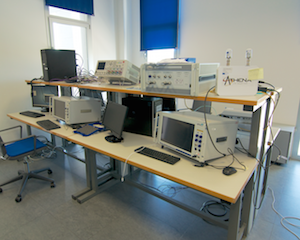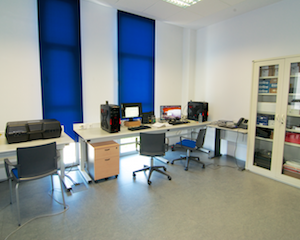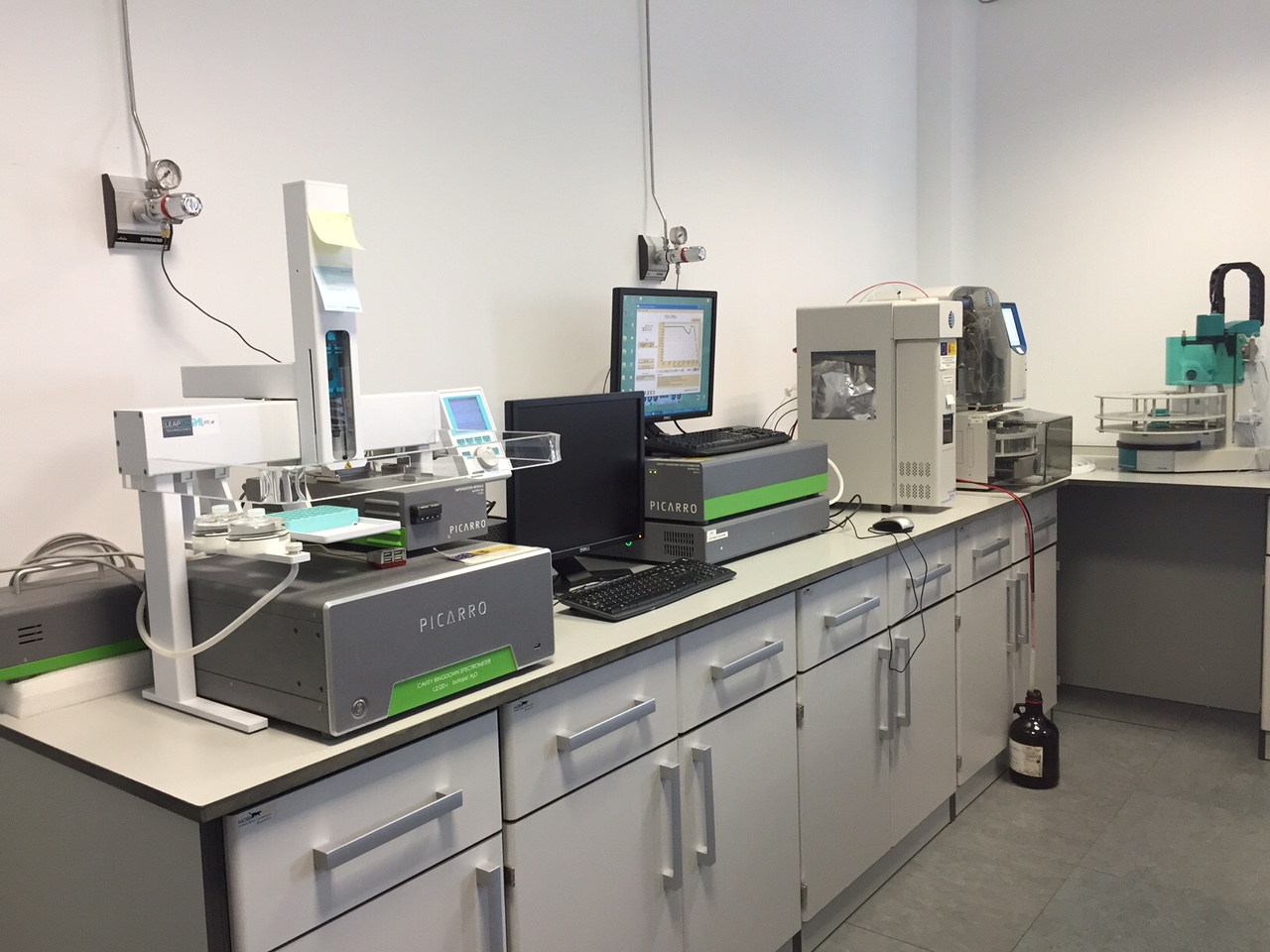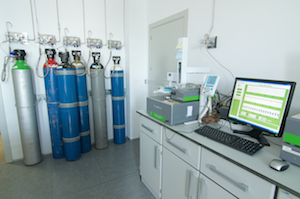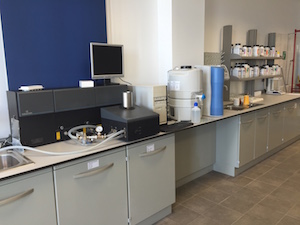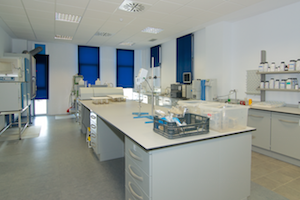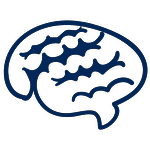Laboratorio
El Edificio cuenta con varios laboratorios de investigación, pertenecientes al CAITI y a CITAT, que facilitan el desarrollo de prototipos operativos, plataformas para el despliegue de comunicaciones, soluciones para el análisis de protocolos de comunicaciones en un amplio abanico de frecuencias, entornos avanzados en el que desarrollar computación forense, etc.
| Laboratorio LTE (CAITI) El laboratorio LTE (Long Term Evolution) del Edificio I+D Ada Byron permite la realización de todo tipo de pruebas sobre protocolos de comunicaciones 4G desde un enfoque multidisciplinar que abarca aspectos como el consumo energético, la configuración de red, la implementación de protocolos, etc. El entorno proporciona un marco de experimentación federado a nivel Europeo que permite configurar redes LTE extremo a extremo así como modificar las pilas de protocolos de la mayoría de los elementos obteniendo información multi-capa correlada. El laboratorio no sólo dispone de hardware y software comercial sino que también ha sido ampliado con herramientas elaboradas por el grupo MORSE (Mobile Network and Software Reliability), incluyendo herramientas de control y configuración así como una micro-implementación de núcleo de red LTE compatible con equipos comerciales, proporcionando en su conjunto un entorno de trabajo de primer nivel, existiendo muy pocas instalaciones similares en el resto de Europa. |
| Laboratorio de seguridad (CAITI) Este laboratorio, perteneciente a NICS Lab, cuenta con un amplio abanico de kits de desarrollo para comunicaciones inalámbricas multi-tecnología, que operan en rangos de frecuencias muy dispares, cubriendo protocolos como ZigBee, Bluetooth Low Energy, 6LoWPAN, RFID y NFC. Además, se cuenta con una plataforma de desarrollo de NIVIS sobre sensores inalámbricos que implementan los protocolos industriales de comunicaciones WirelessHart e ISA 100.11a. Como parte del equipamiento disponible, se incluyen herramientas para el análisis de protocolos de comunicaciones. Entre ellas tenemos disponibles varias soluciones para la captura y el análisis de comunicaciones de FrontLine: SerialTest con soporte Modbus y RS-232, ComProbe USB 2.0 Protocol Analyzer, Ethernet Comprobe + Aggregator Ethernet Tap y NetDecoder. Además, también disponemos de 3 transceptores de National Instruments (NI USRP-2932) de radio definido por software (Tx/Rx) que proporcionan cobertura de frecuencia continua desde 400 MHz hasta 4.4 GHz. Estos dispositivos integran un reloj GPS disciplinado, utilizan un cristal de tipo OCXO con precisión de 10 MHz y tienen capacidades de sincronización usando MIMO. Otros dos equipos ubicados en el mismo laboratorio de seguridad ofrecen servicios para la realización de trabajos en computación forense. Estos equipos incluyen una amplia variedad de opciones para la recepción de datos, y tienen instaladas licencias de dos suites de análisis forense de ámbito profesional que permiten el análisis forense en una amplia variedad de dispositivos. |
| Laboratorio de aguas (CITAT) Este laboratorio, perteneciente a CEHIUMA, está equipado con los siguientes dispositivos de análisis:
|
| Laboratorio del Instituto de Geomorfología y Suelos de la UMA (IGSUMA) El Intituto de Geomorfología y Suelos de la UMA, IGSUMA, es un centro adscrito a la Universidad de Málaga, integrado en el grupo de investigación RNM279 (Geografía Física). Ofrece soporte analítico a la investigación, así como servicios de análisis, consultoría y recomendaciones a particulares y organismos. Su función principal es promover soluciones prácticas, asequibles y novedosas a problemas actuales relacionados con la gestión de nutrientes, la calidad de suelos y regeneración de los mismos. Los posibles ámbitos de actuación son muy variados, desde campos de cultivo de todo tipo hasta entornos naturales, pasando por campos de golf o parques urbanos.
|
Información
| Recursos
| Investigación
| Servicios y Soporte
|

